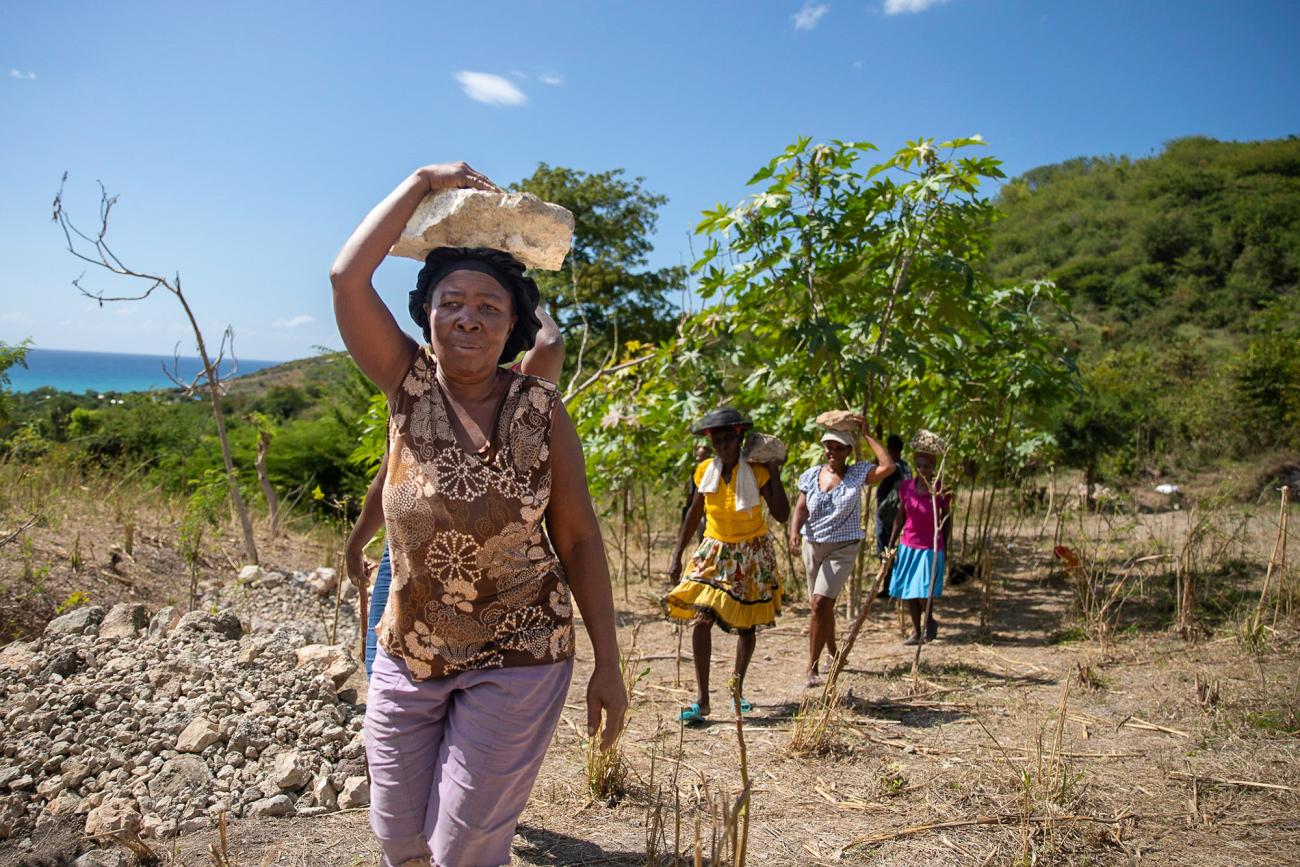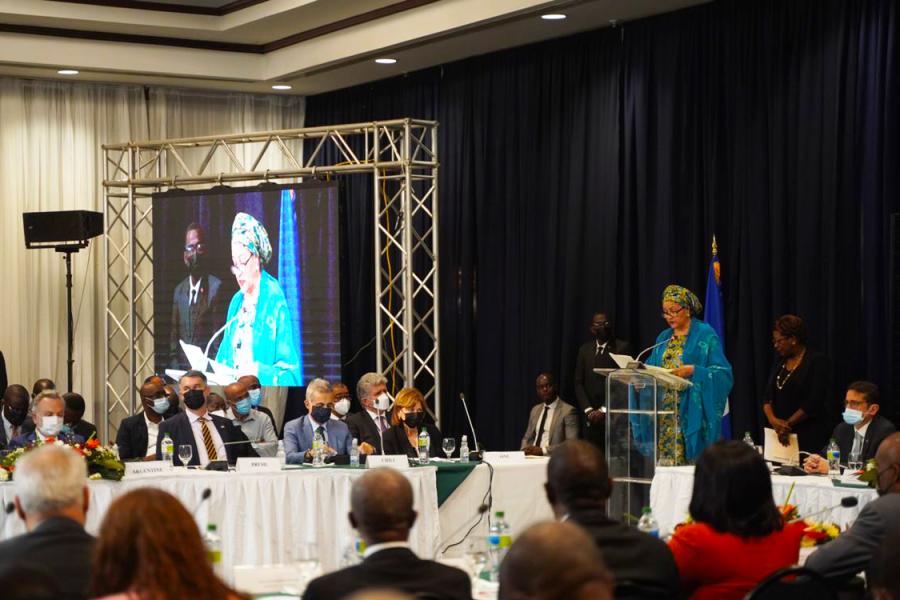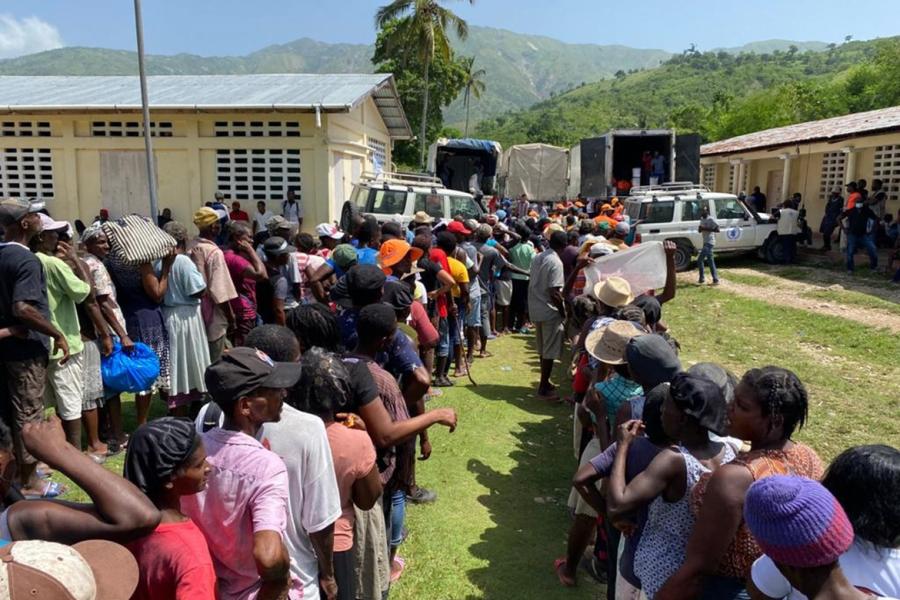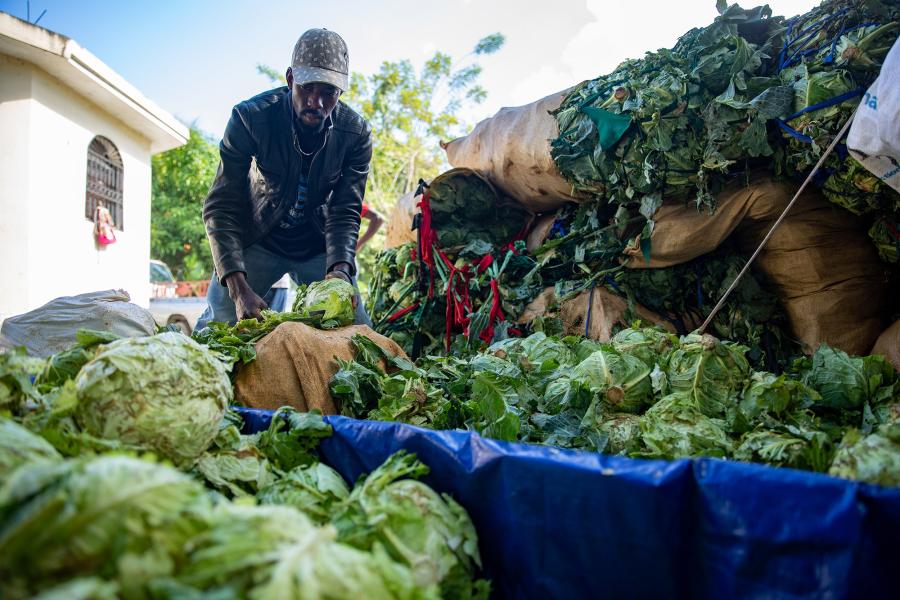Haiti at ‘crossroads’ entering post-earthquake reconstruction

Haiti is at a "crossroads" six months after an earthquake hit the south-west of the country, according to the UN Deputy Secretary-General, Amina Mohammed.
The Deputy Secretary-General was speaking at an international event hosted by the Haitian Government in the country’s capital Port-au-Prince, aimed at supporting the reconstruction and recovery efforts following the earthquake which struck the mainly rural south-west of the country last August.
Ms Mohammed visited the earthquake affected region immediately after the catastrophic event.

“This is not the time to give up”, she said, “because the people of Haiti never give up. Time and time again, they mourn their losses, and then they pick themselves up and put their lives back together,” adding “Haiti is again at a crossroads. Years of investment in stability and development must be protected. And national institutions are ready to lead.”
Over 2,200 people were killed and almost 13,000 were injured and widespread damage was caused to infrastructure. Some 137,000 houses and 1,250 schools were damaged or destroyed, and more than 300,000 students were delayed in returning to school.

More than 95 hospitals and health centers were also affected and roads and bridges damaged, complicating the response capacities in the earthquake zone.
$2 billion needed for reconstruction and recovery
The Government has estimated it will cost close to $ 2 billion to repair the damage caused by the earthquake.
More than half of the funds, just over$ 1 billion will be needed to rehabilitate or rebuild mainly private housing and around $400 is earmarked for education. Health care services and food security initiatives require $40 million and $55 million respectively.
Agriculture, commerce and industry as well as environmental programmes have also been targeted for assistance.

The Prime Minister of Haiti, Ariel Henry, told the event that the reconstruction and recovery effort would include all people. “Not all communities in the Southern Peninsula were affected in the same way. Some suffered more damage and losses than others. However, the recovery plan includes all regions that were directly and indirectly affected.”
Multiple crises
The earthquake last August struck as Haiti was facing, political and security crises as well as ongoing deep-rooted needs for humanitarian and development assistance. The economy is in dire straits, not helped by a blockade of petrol deliveries by armed gangs at the end of 2021 which almost brought the country to a standstill.
Meanwhile, Haiti remains very exposed and vulnerable to earthquakes, flooding and drought and the wider impacts of climate change. A devasting earthquake in January 2010 in which an estimated 220,000 people died, largely in the capital Port-au-Prince, and surrounding areas was the most destructive natural disaster to hit the Caribbean country in recent history.
“We need to be aware that a lack of adequate and timely investment in reconstruction will inevitably push the most vulnerable populations, who will no longer have the means to sustain their livelihoods, towards negative survival strategies,” said the UN deputy Chief, adding that “Internal migration is likely to increase, including to Port-au-Prince, which already faces serious social and economic challenges and high levels of violence.”
External migration is also like to increase as Haitians seek opportunities overseas.











